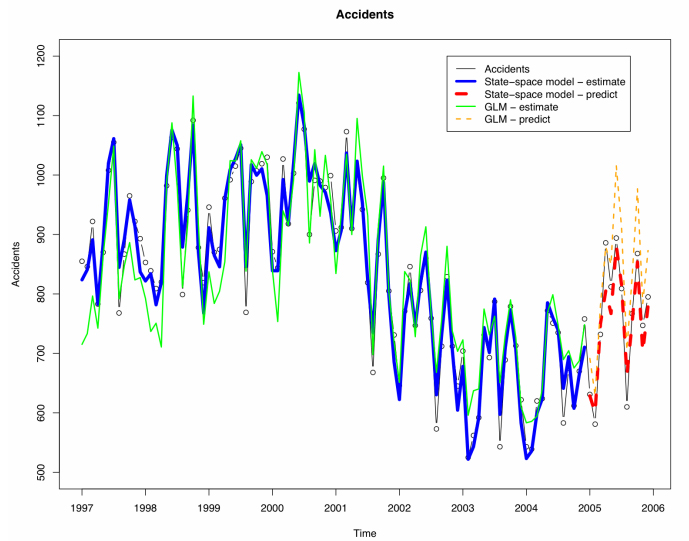
Weather conditions are generally considered as one of the most critical sets of factors affecting the number of road accidents and associated casualties in a given network. There have been a few most interesting papers during the last decade dealing with the impact of such parameters on the number of accidents and casualties, through the development of state-space models at the national level, as well as in other forms. This work is aimed at the exploration of two essential meteorological indicators’ (temperature and precipitation) impact on the number of total accidents and fatalities recorded in the wider Athens area for a period of 9 years. The temporal correlation between accidents and fatalities, as well as meteorological variables, is examined. Generalized linear models (GLM) – a family of models including the negative binomial, Poisson and quasi-Poisson distributional assumptions– as well as dynamic GLM (or state-space) models are employed to present model diagnostics and goodness-of-fit measures. The estimation and prediction accuracy of the various types of models is compared. The examined GLM models show similar estimation and prediction performance. Other aspects of the models are also considered, including models that might give false positive indication of the significance of some values. Furthermore, dynamic GLM/state-space models show a considerably improved performance over the GLM models. The presented models demonstrate a reasonable differentiation across months within a year. Conclusions and recommendations for the practical use of these results in shaping public policy and strengthening road safety campaigns are also discussed.
| ID | pc159 |
| Presentation | |
| Full Text | |
| Tags | accident analysis, statistical modelling, weather conditions |







